I have a 9 volt, 2.5 amp battery (5 9volts connected in parallel). I would like to step the voltage of the battery down to 6 volts while keeping the same current. How might I do this?
-
1There is no current without a load. Where is that duplicate, again? – Eugene Sh. Jul 27 '18 at 19:29
-
Probably this one: https://electronics.stackexchange.com/questions/34745/choosing-power-supply-how-to-get-the-voltage-and-current-ratings – Eugene Sh. Jul 27 '18 at 19:41
-
Easy; a linear voltage regulator would do that, while a smps would give you more amps. – dandavis Jul 27 '18 at 21:39
-
Use the components you want to, but be aware that 9v batteries are expensive and have low charge density. There are many better options, including AA and AAA holders with 9v connectors on them. For the wattage you are drawing you may see a vast improvement from switching to lithium ion. – K H Jul 28 '18 at 02:39
2 Answers
I assume you mean you want 6V @2.5A starting with five 9V batteries. First, connecting them directly in parallel is not a good idea - if the voltages are imbalanced, they will not share the current evenly. Balancing resistors can help with this. To reduce the voltage down to 6, there's a number of possibilities, depending upon how precise the voltage needs to be. Voltage regulator(s) are the way to go here. Adjustable regulators that provide 6V at 3A are quite common, but you'll need more components to set them up. This might even cost you more than those batteries did.
[Updated per comment]
- 149
- 3
-
-
You can use something like [this](https://www.aliexpress.com/item/DC-8A-280W-Step-Down-Buck-Converter-7-40V-to-1-2-35V-Power-Module-LED/32820620034.html?spm=2114.search0104.3.93.469712b9i9wP4b&ws_ab_test=searchweb0_0,searchweb201602_5_10152_10151_10065_10344_10130_10068_10547_10342_10343_10340_10548_10341_10696_10084_10083_10618_10139_10307_10869_10868_10059_100031_10103_10624_10623_10622_10621_10620,searchweb201603_44,ppcSwitch_5&algo_expid=e364bf4b-e200-4e57-a92f-905eae231c14-13&algo_pvid=e364bf4b-e200-4e57-a92f-905eae231c14&priceBeautifyAB=0) if you want. – K H Jul 28 '18 at 02:33
Normally, one might decrease voltage to a load, while simultaneously reducing current drawn from a source (your battery) with a buck-type DC-to-DC converter. Batteries would last longer, and less heat would be generated. But this is not what you ask....
I am assuming that "while keeping the same current" means that current drawn from the battery is the same as the current delivered to the load - rather than: the load current is the same for a 9V source as a 6V source.
The simplest way to keep battery current the same as load current, would be a series-connected 3V zener diode, which might have to dissipate more than a few watts:

simulate this circuit – Schematic created using CircuitLab
The lowest-voltage zener diode in the circuitlab library is 3.3V.
While still inferior to a buck-type DC-to-DC converter, a voltage regulator chip like 7806 would maintain load voltage at 6V, and deliver current to the load that is only slightly larger than current pulled from the battery source. It too would be required to dissipate power as heat, and a heat-sink would be required for larger currents.

7806 regulator includes an upper-current limit of about 1 amp, and also includes an over-temperature limiter, so it is not useful all the way to your 2.5A requirement.
Similar voltage regulators are available that can pass up to 3A, and can be adjusted to output 6V with two resistors, like LM350. Heat-sink still required.
- 23,591
- 1
- 22
- 50
-
If the load resistance is known (and constant) the simplest method of all is to add a dropping resistor. Not elegant (for most values of elegant), but it will work. And "if it's dumb but it works, it ain't dumb", right? – WhatRoughBeast Jul 28 '18 at 14:35
-
@WhatRoughBeast Our interpretations of the OP current requirement differs. If indeed a constant current of 2.5A is required, your interpretation, and simplest solution is correct. How many *loads on a power source* draw constant current, regardless of input voltage? Not many. – glen_geek Jul 28 '18 at 14:44